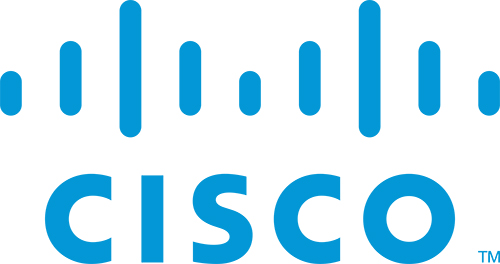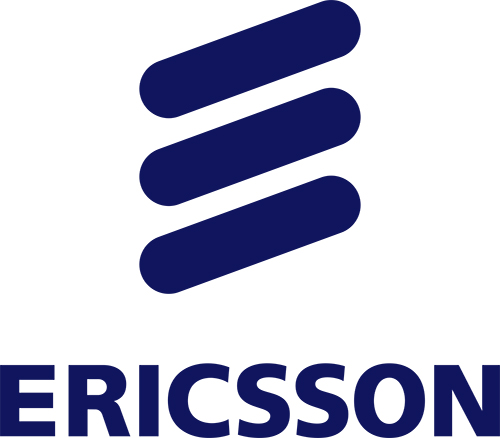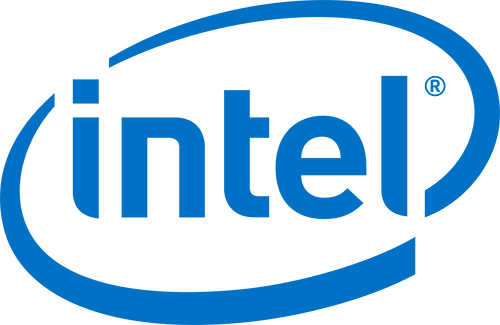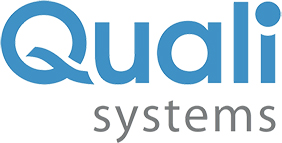ACCESS WITH PASS | 2 | 4 | 6 | 7 |
SECURITY Session
ORCHESTRATION SESSION
SLA, MONITORING, OPTIMIZATION & TEST Session
CONFERENCE DAY 3 | FRIDAY 20 MARCH 2015
| 08.00 | WELCOME, REGISTRATION AND COFFEE | |
 CHAIRMAN Glen Hunt, Principal Analyst, Current Analysis |
SECURITY Session
| 08.30 | Security Applications Transformation in the NFV Era | |
 Security-as-a-service implies much more than just executing VMs of firewalls, VPNs and other protection software. Exploring what are the new designs of security application in the NFV environment. Security-as-a-service implies much more than just executing VMs of firewalls, VPNs and other protection software. Exploring what are the new designs of security application in the NFV environment. Gal Ofel, Head of Software Solution Product Line Manager, Telco Systems |
||
| 08.50 | Virtual Network Security Functions as a Service | |
 Describing the framework and architecture of Virtual Network Security Functions as a Service. Open source projects like OpenStack and CloudStack have begun to tackle the issues but much work remains. Describing the framework and architecture of Virtual Network Security Functions as a Service. Open source projects like OpenStack and CloudStack have begun to tackle the issues but much work remains. Linda Dunbar, Distinguished Engineer, Huawei |
||
| 09.10 | A Framework for NFV Security using Early Warning Sensors | |
 Outlining a framework for securing an NFV infrastructure using lightweight sensors, that can be embedded within hypervisors and switches, to provide early warning of compromised virtual network functions (VNFs). Outlining a framework for securing an NFV infrastructure using lightweight sensors, that can be embedded within hypervisors and switches, to provide early warning of compromised virtual network functions (VNFs). Authors: Kousik Nandy and Natarajan Venkataraman, Ericsson Natarajan Venkataraman, Ericsson |
||
| 09.30 | The SECURED Project: Personnalized Security Services by Means of NFV and SDN | |
 The SECURED architecture creates a trusted and virtualized execution environment allowing different actors to install on-demand and execute multiple security applications on the network edge device to protect the traffic of a specific user. It leverages software network technologies (SDN, NFV) to guarantee the enforcement of user-specific and device-independent security policies. The SECURED architecture creates a trusted and virtualized execution environment allowing different actors to install on-demand and execute multiple security applications on the network edge device to protect the traffic of a specific user. It leverages software network technologies (SDN, NFV) to guarantee the enforcement of user-specific and device-independent security policies.Diego Lopez, Telefonica |
||
| 09.50 | COFFEE BREAK |
| 10.20 | Service Orchestration in Hybrid Physical/Virtual Networks | |
 Most real NFV use cases implement network services that involves a mix of virtual and physical network devices. Presenting principles and real examples on how achieve service orchestration in such hybrid environments. Most real NFV use cases implement network services that involves a mix of virtual and physical network devices. Presenting principles and real examples on how achieve service orchestration in such hybrid environments. Stefan Vallin, Product Strategy, Tail-f Systems |
||
| 10.40 | Application aware SDN | |
 Demonstrating how SDN is a key building block to setup application policies which orchestrate communication between applications. Discussing how SDN introduces application policies and how it is able to provide networking automation for Application in a centralised and distributed way with application connected through the WAN or via an overlay in a hybrid private cloud or public cloud environment. Demonstrating how SDN is a key building block to setup application policies which orchestrate communication between applications. Discussing how SDN introduces application policies and how it is able to provide networking automation for Application in a centralised and distributed way with application connected through the WAN or via an overlay in a hybrid private cloud or public cloud environment. Wim Henderickx, Director Network Consulting Engineering – Technology, IP Division, Alcatel-Lucent |
||
| 11.00 | Use Cases for Carrier-grade Virtualized Router | |
 Virtualization in most cases is not intended to replace the physical infrastructure but to extend it with properties unique to software based solutions: agility, scalability and consistency with existing physical routers. Exploring the various use cases that can be leveraged with carrier-grade virtualized routers. Virtualization in most cases is not intended to replace the physical infrastructure but to extend it with properties unique to software based solutions: agility, scalability and consistency with existing physical routers. Exploring the various use cases that can be leveraged with carrier-grade virtualized routers. Sheryl Zhang, Juniper NETWORKS |
||
| 11.20 | Network Bottlenecks Multiply with NFV; Remember Data Plane Performance | |
 Describing innovations in high performance NFV Infrastructure (NFVI), including the ability to host any Virtual Networking Function (VNF) with no change required to the OS running on the host environment and deliver low latency inter-VNF communications and flexible VNF chaining. Describing innovations in high performance NFV Infrastructure (NFVI), including the ability to host any Virtual Networking Function (VNF) with no change required to the OS running on the host environment and deliver low latency inter-VNF communications and flexible VNF chaining. Eric Carmès, CEO and Founder of 6WIND |
||
| 11.40 | Open Network Hypervisor: Network Virtualization Enabler | |
 Describing the framework and architecture of an open network hypervisor system, similar to computer virtualization, which enables cloud computing, network infrastructure virtualization as a basic requirement for future network service cloud. The Open Network Hypervisor can be applied to data center network and carrier wide area network. Describing the framework and architecture of an open network hypervisor system, similar to computer virtualization, which enables cloud computing, network infrastructure virtualization as a basic requirement for future network service cloud. The Open Network Hypervisor can be applied to data center network and carrier wide area network.Susan Hares, IETF IDR working group chair, Huawei |
||
| 12.00 | Carrier DevOps Orchestration | |
 Discussing what DevOps (orchestration) looks like as it changes service innovation, cross-team collaboration, infrastructure and test automation, and is necessarily influenced by telecom architecture to change from being compute-centric to being about network topologies. Exploring both concepts and examples of DevOps and agile development initiatives. Discussing what DevOps (orchestration) looks like as it changes service innovation, cross-team collaboration, infrastructure and test automation, and is necessarily influenced by telecom architecture to change from being compute-centric to being about network topologies. Exploring both concepts and examples of DevOps and agile development initiatives. Alex Henthorn-Iwane, Vice President Marketing, Qualisystems |
| 12.30 | LUNCH |
| 14.00 | Moving from NFV PoCs to Real World Deployments | |
 Presenting test methodologies to validate the functionality and performance of VNFs and the virtual infrastructure. While VNFs are expected to behave similar to PNFs, the coexistence of dozens of VNFs running simultaneously on the same hypervisor can pose challenges to testing. Presenting test methodologies to validate the functionality and performance of VNFs and the virtual infrastructure. While VNFs are expected to behave similar to PNFs, the coexistence of dozens of VNFs running simultaneously on the same hypervisor can pose challenges to testing. Rajesh Rajamani, Director of Marketing, Service Provider Networks and NFV, Spirent COMMUNICATIONS |
||
| 14.30 | Possible Gains with Lightweight Container Environments (Docker and CoreOS) | |
| Operators are realizing the greater efficiency gains that are possible with lightweight container environments such as Docker and CoreOS. Looking at the implications of such an evolution for the networking layer – and demonstrating that, to scale up with the workload demands, operators will have to move from Layer 2 overlays to a flat Layer 3 routed architecture. Jon Berger, VP Engineering and Customer Services, Metaswitch Networks |
||
| 15.00 | Application Convergence in SDN/NFV enabled Network and Benchmarking Agility | |
 Surveying an end-to-end SDN based service deployment architecture and its components and discussing the impact of these components on the SLA KPIs. New test methodologies are presented to validate the various components including (but not limited to) SDN orchestration. Concluding with the test results from a real-world use case. Surveying an end-to-end SDN based service deployment architecture and its components and discussing the impact of these components on the SLA KPIs. New test methodologies are presented to validate the various components including (but not limited to) SDN orchestration. Concluding with the test results from a real-world use case. Authors: Rajiv Papaneja, Huawei, Dean Lee, Toshal Dudhwala, Ixia Bhavani Parise, Cisco Rajiv Papneja, Huawei |
||
| 15.30 | Optimising VNF Placement over a Wide Area Network | |
 With the visualization of network infrastructure services through Network Function Visualization (NFV), there are now choices as to where each Virtualised Network Function (VNF) may be placed. Considering the problem of optimising VNF placement. Presenting studies based on real networks that show how non-optimised VNF placement can make inefficient use of the underlying network and data centre resources. With the visualization of network infrastructure services through Network Function Visualization (NFV), there are now choices as to where each Virtualised Network Function (VNF) may be placed. Considering the problem of optimising VNF placement. Presenting studies based on real networks that show how non-optimised VNF placement can make inefficient use of the underlying network and data centre resources. Authors: John Evans, Distinguished Engineer, Michael O’Gorman, Director Engineering, Cisco John Evans, Distinguished Engineer, Cisco |
||
| 16.00 | Exploring the Benefits of NFV and SDN for Smart Video Conferencing Services | |
 Research into emerging applications of ad hoc video communication has identified how Network Functions Virtualisation and Software-Defined Networking could play a significant role in the development of smart conferencing systems which are capable of dynamically scaling resources as global demand changes over time. The EU-funded collaborative project Vconect has carried out a modelling and prototyping activity to highlight some of the service performance benefits that may be accrued through the application of NFV and SDN to ad hoc video communication. Research into emerging applications of ad hoc video communication has identified how Network Functions Virtualisation and Software-Defined Networking could play a significant role in the development of smart conferencing systems which are capable of dynamically scaling resources as global demand changes over time. The EU-funded collaborative project Vconect has carried out a modelling and prototyping activity to highlight some of the service performance benefits that may be accrued through the application of NFV and SDN to ad hoc video communication. Authors: Ian Kegel, Doug Williams, Peter Hughes, Tim Stevens, BT Research & Innovation, Richard Clegg, Raul Landa, David Griffin, Miguel Rio, University College London Ian Kegel, BT Research & Innovation |
| 16.30 | END OF CONFERENCE DAY THREE | |

















